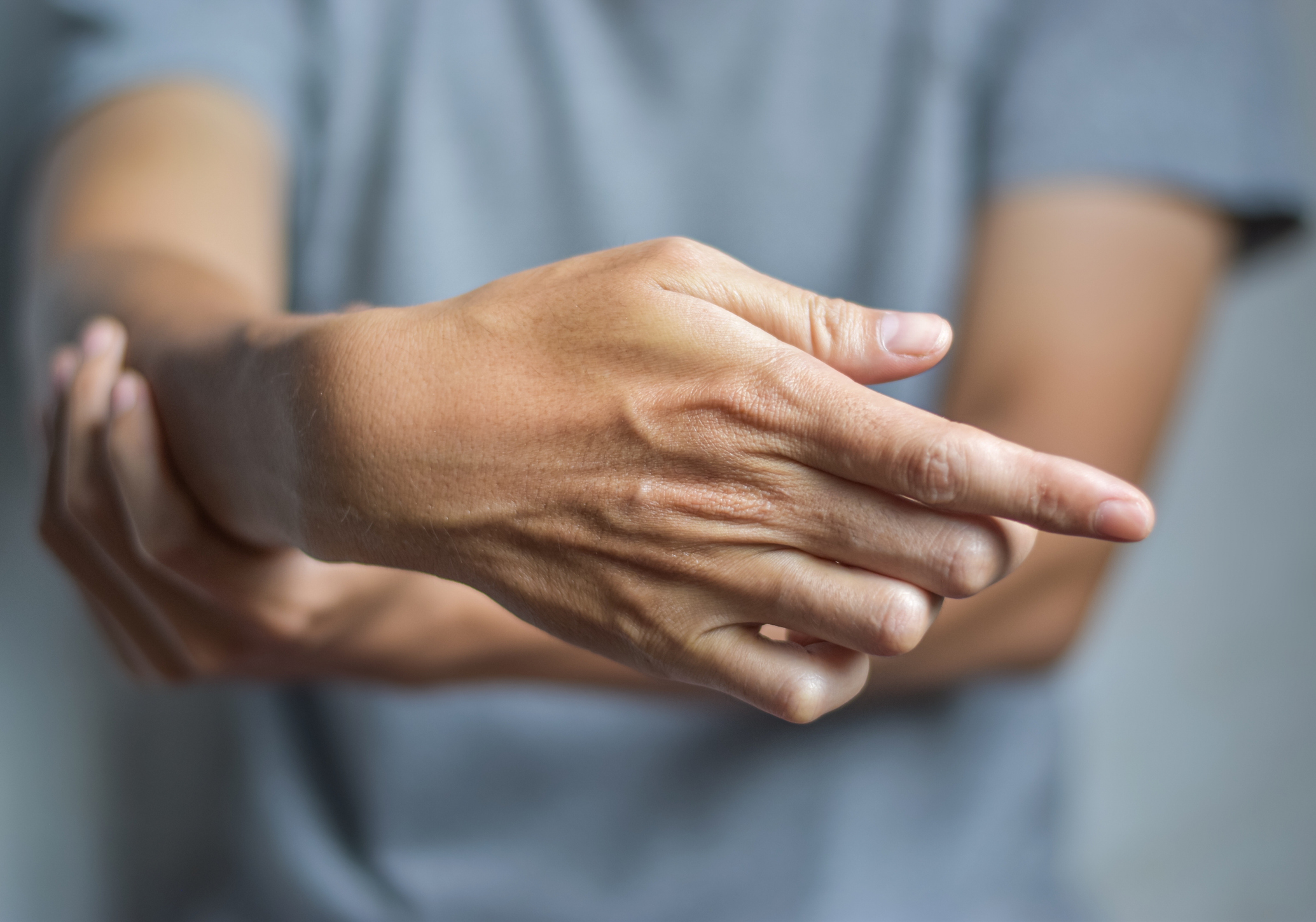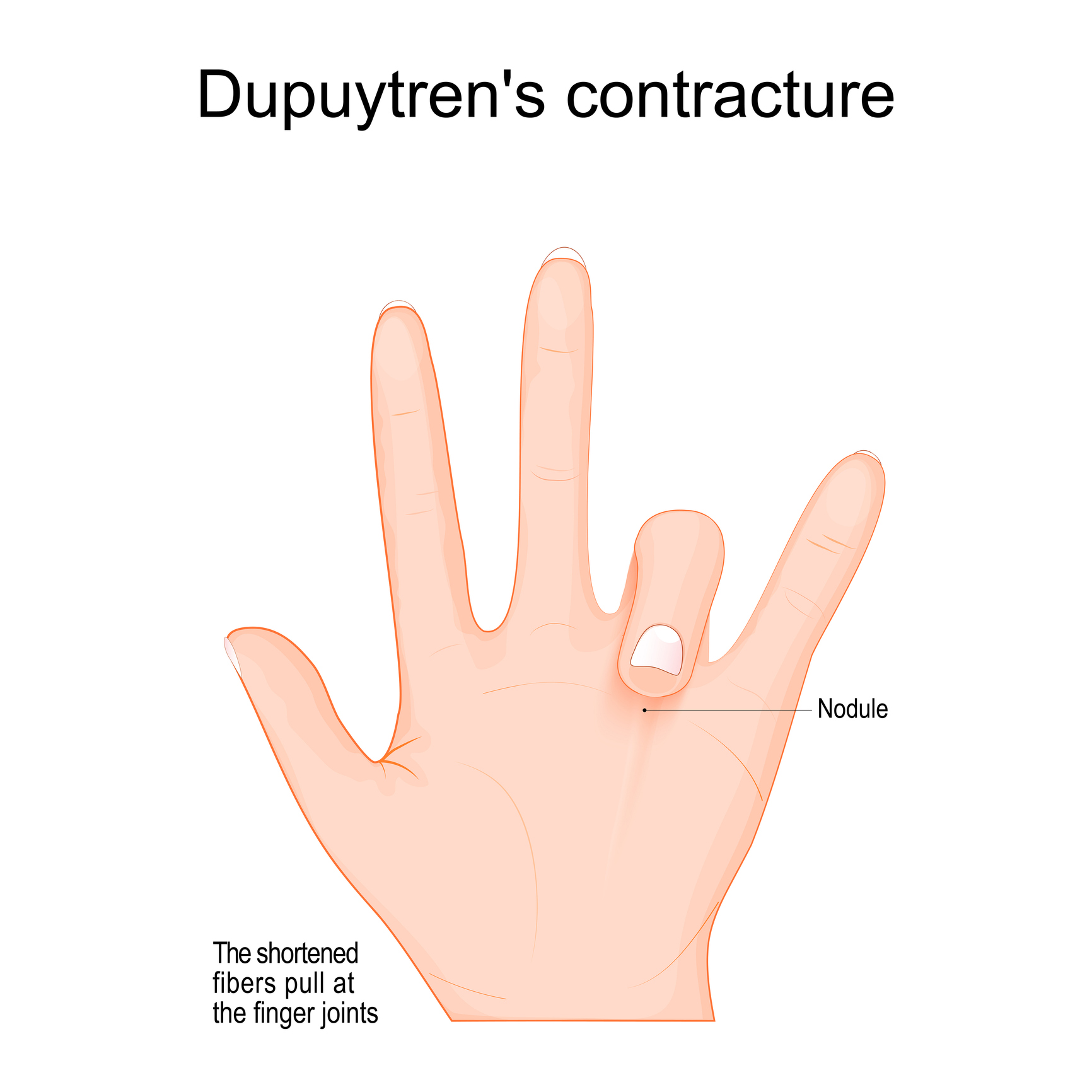What is Dupuytren Contracture Release?
Dupuytren Contracture Release is a surgical procedure aimed at treating Dupuytren’s contracture, a condition where the tissue beneath the skin of the palm thickens and forms nodules, causing the fingers to bend inward and limiting hand function. This procedure involves removing or dividing the thickened tissue (palmar fascia) to restore finger extension and improve hand mobility.

Why Might You Need Dupuytren Contracture Release?
Dupuytren Contracture Release may be recommended if you experience:
- Finger Contracture: Persistent bending or curling of one or more fingers, particularly the ring and little fingers.
- Difficulty Straightening Fingers: Limited ability to fully extend the affected fingers, affecting hand function.
- Progressive Symptoms: Symptoms that worsen over time, leading to increased hand deformity and functional impairment.
- Non-Responsive to Conservative Treatments: Lack of improvement with non-surgical treatments such as splinting or collagenase injections.
What Are the Steps in a Dupuytren Contracture Release Procedure?
Preoperative Preparation
- Medical Evaluation: Comprehensive review of your medical history, symptoms, and previous treatments.
- Physical Examination: Assessment of finger flexibility, range of motion, and severity of contracture.
- Informed Consent: Detailed discussion of the procedure, potential benefits, and risks.
During the Procedure
- Patient Positioning: You will be comfortably positioned to allow easy access to the affected hand.
- Anesthesia: Local or regional anesthesia is administered to numb the hand and arm.
- Incision: A small incision is made in the palm or finger to access the thickened tissue.
- Tissue Release: The surgeon carefully divides or removes the thickened palmar fascia to release the contracture and allow finger extension.
- Closure: The incision is closed with sutures, and a sterile dressing is applied.
Postoperative Care
- Observation: Brief period of monitoring after the procedure to ensure there are no immediate complications.
- Hand Therapy: Rehabilitation exercises and hand therapy may be prescribed to improve finger mobility and prevent stiffness.
- Activity Guidelines: Instructions on caring for the incision and guidelines for gradually resuming normal activities.
What Are the Steps in a Trigger Finger Release Procedure?
Preoperative Preparation
- Medical Evaluation: Comprehensive review of your medical history, symptoms, and previous treatments.
- Physical Examination: Assessment of finger flexibility, range of motion, and severity of contracture.
- Informed Consent: Detailed discussion of the procedure, potential benefits, and risks.
During the Procedure
- Patient Positioning: You will be comfortably positioned to allow easy access to the affected hand.
- Anesthesia: Local or regional anesthesia is administered to numb the hand and arm.
- Incision: A small incision is made in the palm or finger to access the thickened tissue.
- Tissue Release: The surgeon carefully divides or removes the thickened palmar fascia to release the contracture and allow finger extension.
- Closure: The incision is closed with sutures, and a sterile dressing is applied.
Postoperative Care
- Observation: Brief period of monitoring after the procedure to ensure there are no immediate complications.
- Hand Therapy: Rehabilitation exercises and hand therapy may be prescribed to improve finger mobility and prevent stiffness.
- Activity Guidelines: Instructions on caring for the incision and guidelines for gradually resuming normal activities.

Recovery and Rehabilitation
Postoperative Care
- Pain Management: Medications and techniques for managing postoperative pain and swelling.
- Follow-Up Appointments: Scheduled to monitor healing, assess finger function, and discuss rehabilitation progress.
Potential Complications
While Dupuytren Contracture Release is generally safe, potential complications can include:
- Infection: Risk of infection at the surgical site.
- Nerve or Vascular Injury: Rare but possible risk of injury to nearby nerves or blood vessels.
- Recurrence: Possibility of Dupuytren’s contracture returning over time, particularly in severe cases.
Benefits of Dupuytren Contracture Release in
Hand & Upper Extremity Management
- Improved Finger Function: Restoration of finger extension and improved hand mobility.
- Prevention of Progression: Halting or slowing the progression of Dupuytren’s contracture.
- Enhanced Quality of Life: Improved ability to perform daily activities and use the hand for work and leisure.
- Potential for Long-Term Relief: Reduction in symptoms with the possibility of long-term relief from contracture recurrence.
Find a Hand Surgeon
Hand & Upper Extremity
Genesys Surgery CenterLivoniaView all

